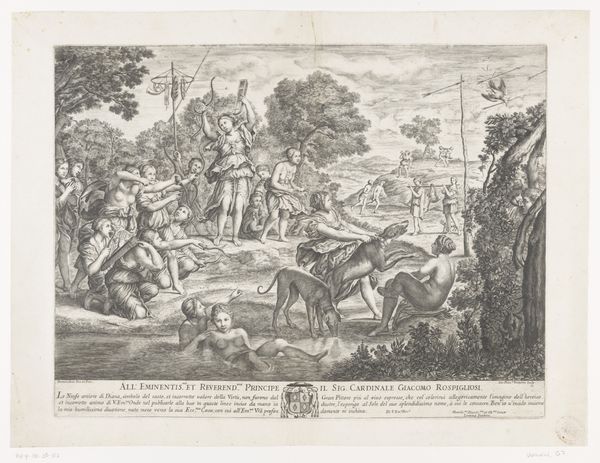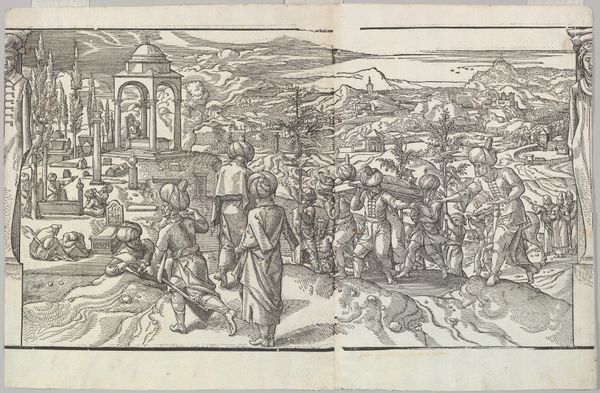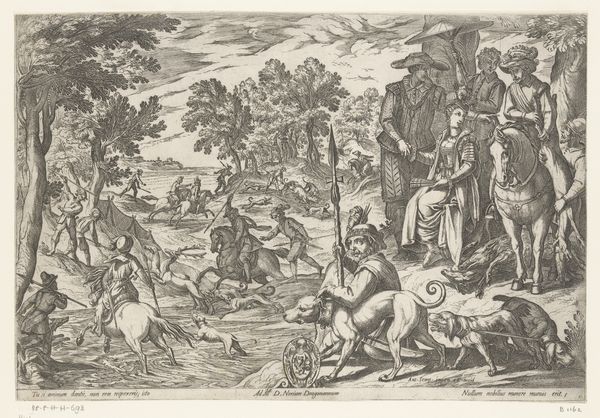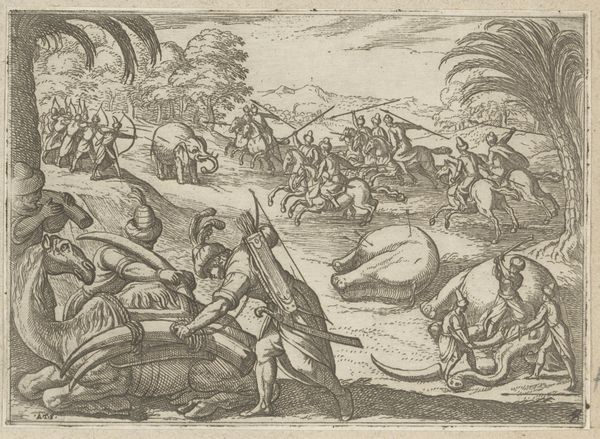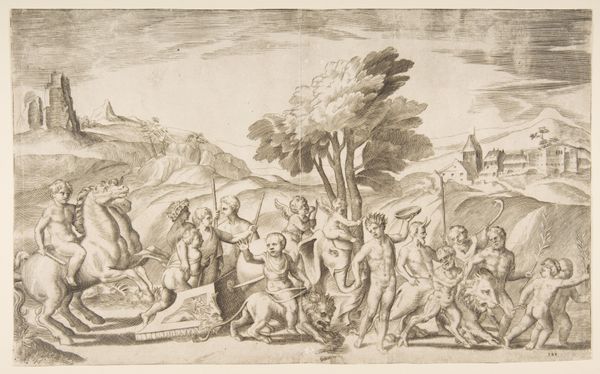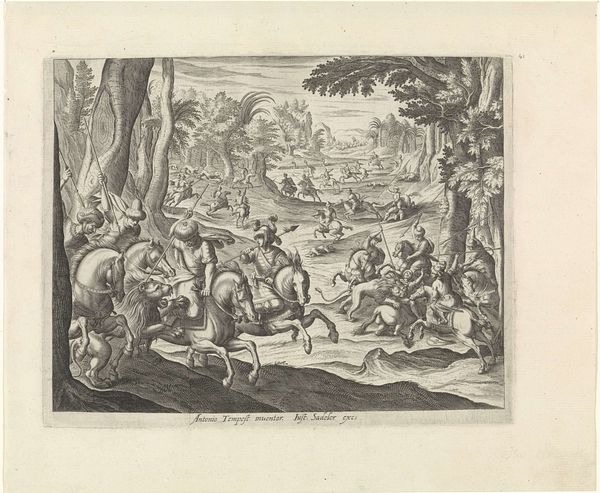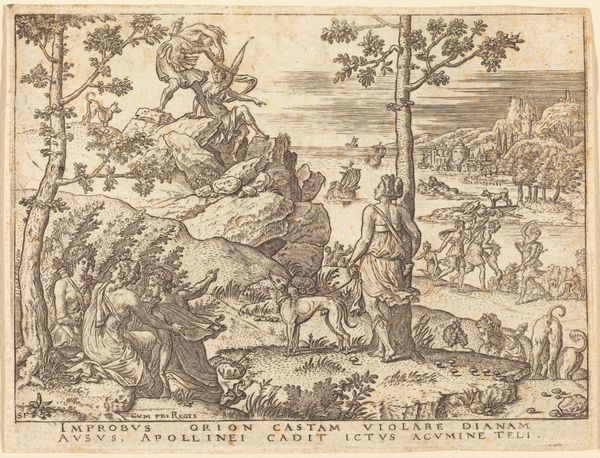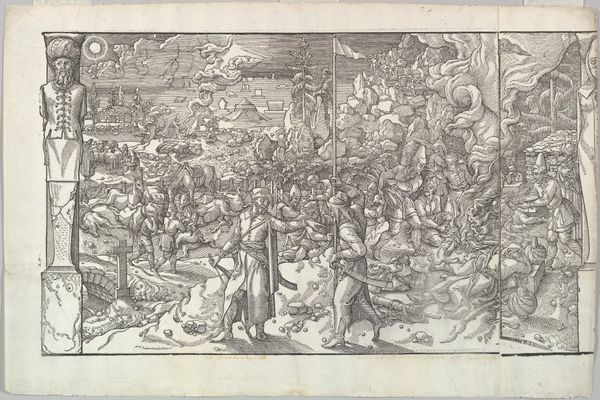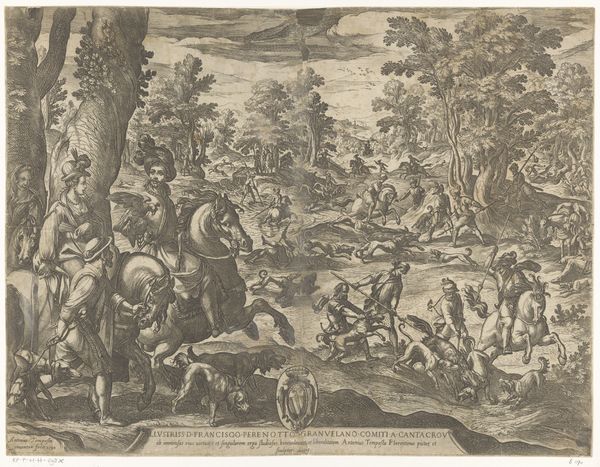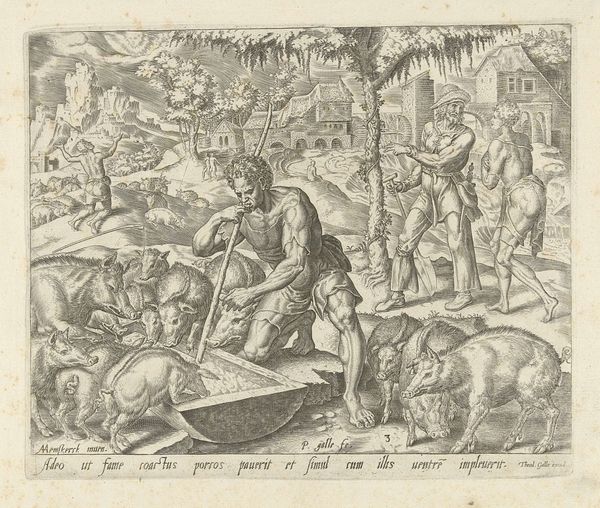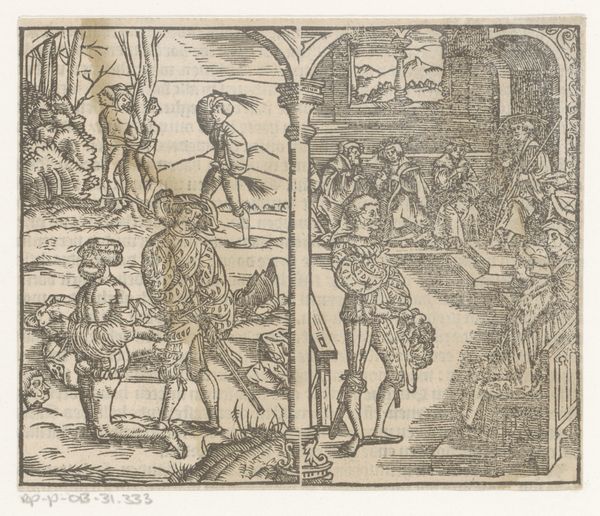
Turkish Soldiers at Rest from the frieze Ces Moeurs et fachons de faire de Turcz (Customs and Fashions of the Turks) 1553
0:00
0:00
drawing, print, ink, engraving
#
drawing
#
ink drawing
#
pen drawing
# print
#
pen sketch
#
landscape
#
figuration
#
11_renaissance
#
ink
#
soldier
#
horse
#
genre-painting
#
history-painting
#
northern-renaissance
#
engraving
Dimensions: Sheet: 13 3/4 × 23 7/16 in. (35 × 59.5 cm)
Copyright: Public Domain
Curator: This print, "Turkish Soldiers at Rest from the frieze Ces Moeurs et fachons de faire de Turcz," was created in 1553 by Pieter Coecke van Aelst. The print on view here at The Metropolitan Museum of Art is rendered in ink. Editor: It's striking how much narrative is packed into this single panel! The line work has an almost frantic energy, despite the "rest" of the soldiers indicated in the title. I am sensing a great deal of tension! Curator: The piece exemplifies van Aelst’s interest in documenting cultural encounters through meticulous rendering of costume, weaponry, and the surrounding landscape. It was intended to illustrate a book. Considering printing processes at the time, that required considerable collaboration between artist, workshop, and publisher. The labour put into disseminating information at scale, that’s key. Editor: Yes, it absolutely speaks to the complexities of cultural representation and power dynamics. Van Aelst never traveled to Turkey; his understanding would have been built from secondhand accounts and existing visual tropes. How might his own cultural biases have influenced what he chose to depict, and what narratives are amplified or suppressed? It should be pointed out this print would have played into the contemporary European view of the “exotic” Turk. Curator: Precisely! It also brings up the fascinating point of artistic license. While some aspects are carefully detailed—like the specific harness construction on the horses or the layering of fabrics, creating very rich blacks in the ink—others appear generalized. He likely utilized source images, then applied his own aesthetic, but how to verify this? Editor: The landscape itself, rendered in the Northern Renaissance style, almost feels like a stage setting, divorced from any specific locale. These elements are acting as devices, reflecting, perhaps, a desire to portray both realistic detail and a generalized sense of the “Other”. Curator: And it's within that tension—between observed detail and imagined reality—that we understand both van Aelst's artistic process and the larger social context of intercultural exchange in the 16th century. A printed, readily-consumed artefact of carefully controlled exoticism. Editor: It leaves me wondering how a contemporary Turkish artist might respond to this work—to reclaim the narrative or deconstruct its assumptions. Art always prompts new dialogues, across eras and cultures.
Comments
No comments
Be the first to comment and join the conversation on the ultimate creative platform.
